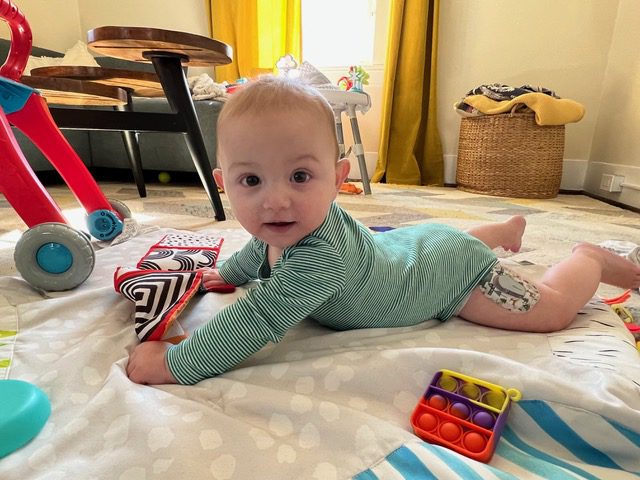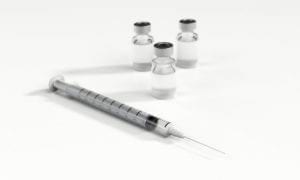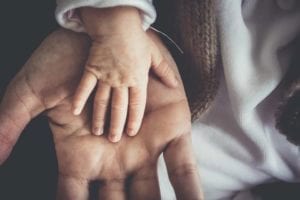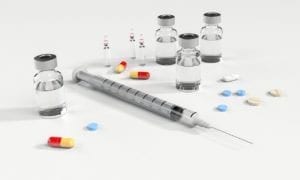Written By Katie Ward
I am not one who likes to bring attention to themselves, and you won’t ever find me talking about my struggles, issues, or anything negative. I am just a private person when it comes to anything like that. However, when learning of Lucas’s diagnosis and how rare it was, I knew that the best thing I could do was bring attention to it. It was shocking to find out that not only do most people not know what GSD is, but many physicians aren’t familiar with it either.
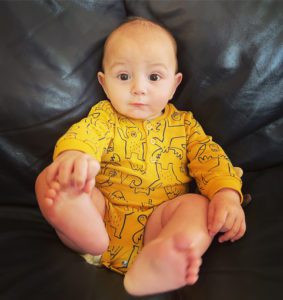
When I was pregnant with Lucas it was a completely average pregnancy and also a very average birth. Everything went smoothly and I was anxious to get home as soon as possible because we also had a 3-year-old daughter at home, Margo. Lucas initially wasn’t eating a lot but I didn’t read much into it because I remembered when I had my daughter she slept for a long time after being born. When they were going to take him for his circumcision, they said it would be best if he had a full meal beforehand. I tried to feed him but still he would not eat much, and he was just so sleepy. They took him off and performed the surgery but noticed he wasn’t as responsive as he should be. There they checked his blood sugar and it was in the low teens. (Looking back, I recalled twice before this moment that they said he was cold, or that his temperature was lower than it should be even though he was swaddled). They quickly took him off to the NICU but even then they didn’t think there was any big issue. The doctors there said that a lot of babies have what they called “transitional hypoglycemia” and that they will keep him on D10 and wean him off. The doctors assured us that for most babies who have transitional hypoglycemia, the condition is corrected within 3 days. After 3 days in the NICU, they still had issues weaning Lucas off of the IV, and eventually when they did wean him off they noticed he could only go 2-2.5 hours before his blood sugar would drop. The days that followed were a whirlwind of trying every test they could to narrow it down.
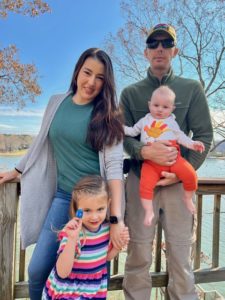
I am very fortunate that there are many physicians in my family. My husband is a PICU physician and my father is an ED
physician. In doing his own research, my father suggested glycogen storage disease (GSD) rather early, but we were told that GSD is so rare it was really unlikely that this was his diagnosis. They kept doing multiple tests until finally they said it has to be a genetic issue. The geneticist ran a hypoglycemic panel through Invitae Labs, but we were told the results would take about 3 weeks. We really didn’t want to continue staying in the NICU if they couldn’t do anything further for him aside from just making sure he ate every two hours and checking his blood sugar. We were also struggling between going to the NICU back and forth multiple times a day for Lucas while we still had our 3-year-old daughter at home as well. We suggested a continuous glucose monitor so that we could see and monitor his blood sugar more closely at home, and we were able to get one. No one in the NICU had ever put a continuous glucose monitor on a newborn but they were willing to try. The NICU team was weary about us going home having to feed a baby every 2 hours, but we didn’t see a point in staying any longer until we had more information and with that, after 13 days in the NICU, we went home. But unlike others who “graduate the NICU” we went home not sure what the future would hold.
After 3 weeks we get a call from the geneticist. It was confirmed that grandfather was right: “it is glycogen storage disease type 1A.” Even when my father looked up the diagnosis online, there really wasn’t much available in regards to what life looks like for someone with GSD. It was like opening a dictionary, and finally finding the page with the word to discover its meaning, and there just wasn’t anything there.
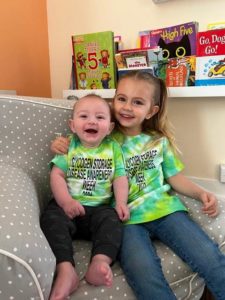
We are still learning what Lucas’s life will look like, and we have a great team of doctors, nutritionists, family, and friends on our side, but hands down the most helpful resource has honestly been the Glycogen Storage Disease page on Facebook. Social media when used for good can be a very powerful tool! Through this page we were able to see other babies with GSD, even specifically to us, GSD type 1A. I also spoke to parents of much older (now adult) GSD kids and it was so hopeful to see them living “seemingly normal” lives, living independently and doing regular activities. Some are even are athletic and play sports! This group has given me much more information than any other resource online was able to provide, a window into what Lucas’s future would look like, and a community of people who can relate to things we are currently going through. This community has also helped to answer questions I have as they come up along the way.
Lucas uses a Dexcom device, which is a continuous glucose monitor. Hands down this tool is a life saver and without this I’m not sure we would have felt comfortable leaving the NICU when we did. With glycogen storage disease, Lucas’s blood sugar can drop so rapidly. I have seen him go from 70 to 40 in a matter of 10-15 min. I would have driven myself crazy, and his finger tips raw, with the amount of times I would have to check for fear of him being too low. The Dexcom devices sends out a loud alarm when he drops below 70 which is so necessary because Lucas doesn’t show any signs of being hypoglycemic.
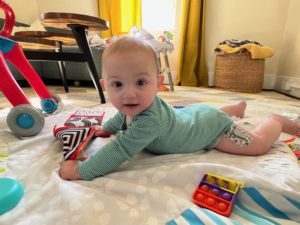
Recently we were notified by our insurance agency that they were no longer going to cover the Dexcom for Lucas. A CGM is only covered by insurance if you are an insulin dependent diabetic. This was just so shocking to me. It has been so frustrating trying to advocate for my son with a rare disease because this diagnosis doesn’t check the right boxes. I appealed their decision and included my explanation of why I did think he needed this life saving device, along with multiple letters of necessity from our physicians and the ACMG Standards of care for Glycogen Storage Disease in which I highlighted everything that mentioned the need to closely monitor blood sugar. I am happy to say that I won the appeal, and now our insurance company is going to include GSD as a reason for a CGM. To me that was a small victory and a step in the right direction so that those who come after me won’t have to fight that battle (at least with that one insurance company). But it is sad that it is a battle we have to fight at all. It’s hard enough dealing with the challenges that come with raising a child with a rare disease, fighting insurance companies and proving that you have a disease that deserves as much help as others is something we shouldn’t have to do.


